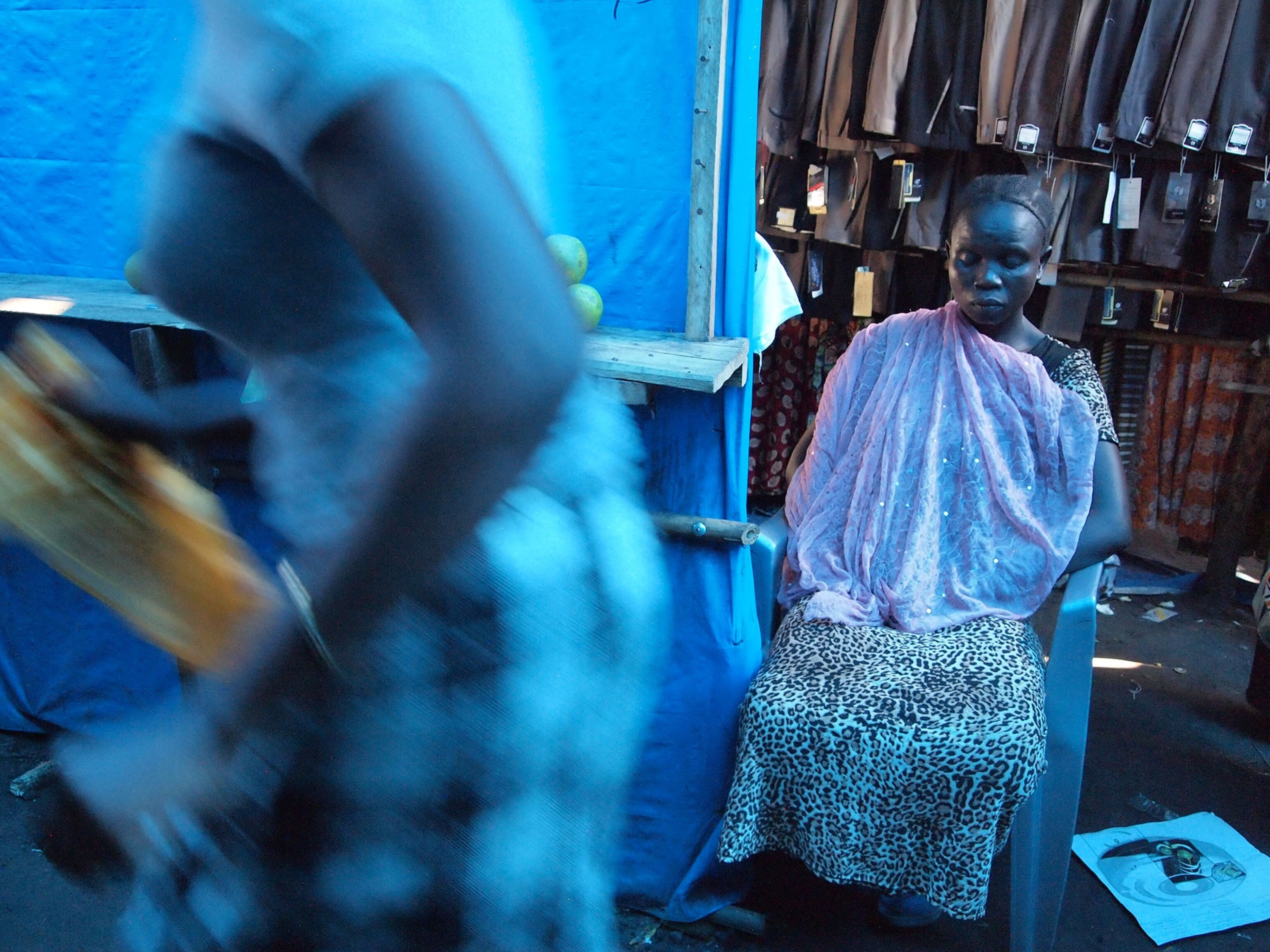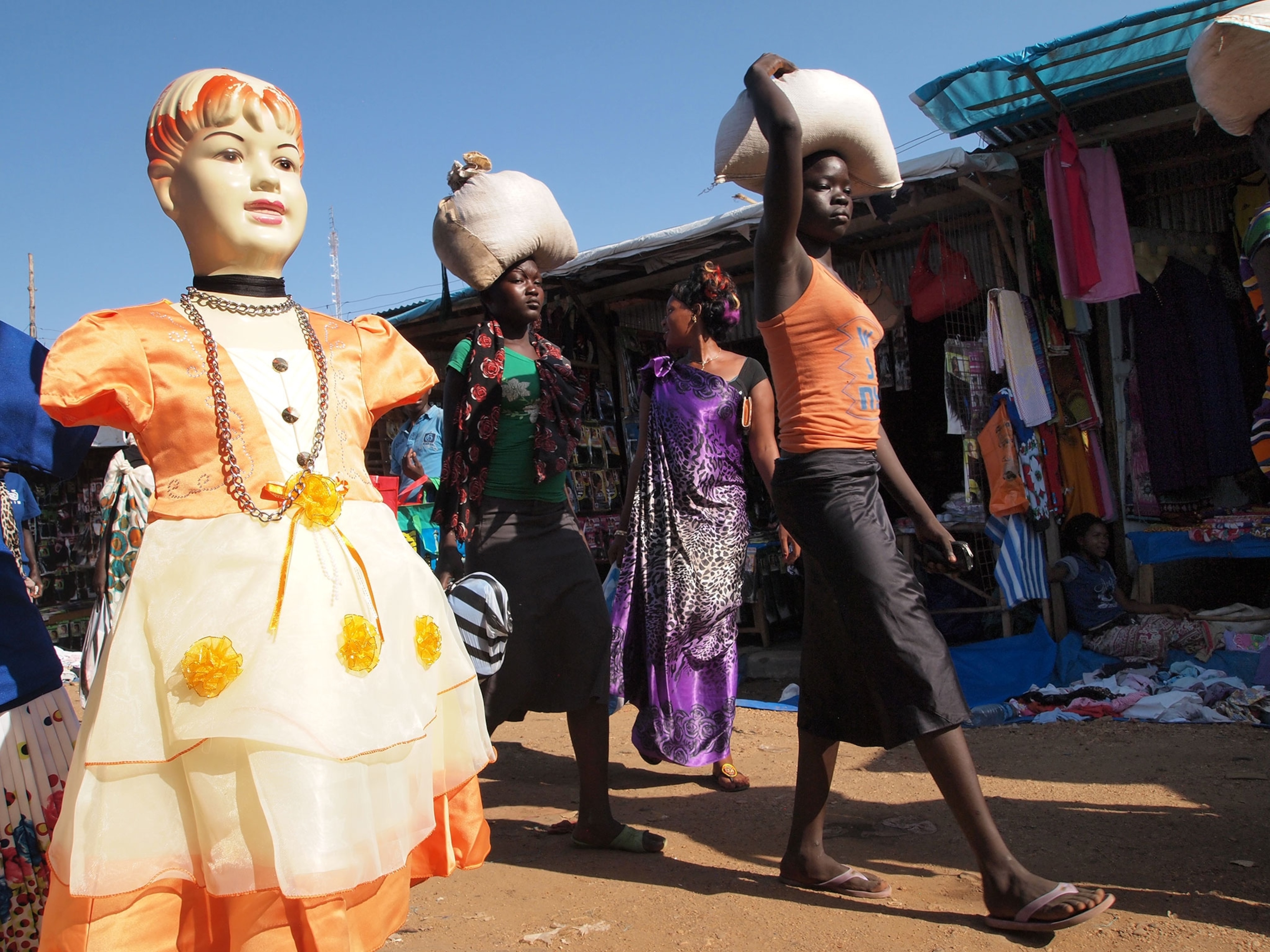
Peacebuilding With Cameras in South Sudan
Can a camera be a tool for peacebuilding? And can change begin with something as small as a group of students coming together to take pictures not of what separates them but of what bonds them as human beings—simple things like the dawn, kids on a playground, or a sports tournament?

This past September, these questions were put into practice in South Sudan, the world’s newest nation, which has been embroiled in bitter ethnic conflict since December 2013. National Geographic Photo Camp, in partnership with Internews, put cameras in the hands of 20 communications students at the University of Juba. Equal numbers of men and women, representing a cross-section of tribes, spent six days with National Geographic photographers learning how to become visual storytellers.

“Living closely together for five days, we didn’t have misunderstandings or fight,” wrote one student following the camp. “I think this sends a big message out there that we’re South Sudanese, and no matter what, we can live together as one people.”

The biggest challenge, it turned out, was not with interpersonal dynamics but with something we take for granted in Western democracies—being able to photograph freely in public. “It is very hard to photograph in South Sudan … between the paranoia of the people and the absolute rejection of photography by the security forces and the [government] officials,” says Ed Kashi, one of the National Geographic photographers on the trip.
The group was under security protection, and their movements were closely monitored. With the exception of a road outside of town that they visited to photograph the sunrise (and to which they were restricted to a quarter-mile strip) and trips to the local market, most of the situations were in closed environments. Even then, each place required extensive advance work to get permission. “You don’t just drive around Juba,” explains Ross Goldberg, another member of the National Geographic team.



One particularly tense situation unfolded in an IDP (Internally Displaced People) camp, where Kashi had taken his team of students to photograph. The camp mainly housed members of the Nuer tribe and essentially served the purpose of both protecting them and preventing them from entering the surrounding enemy territory, Kashi explains. As the group was leaving after the first day of shooting, they were confronted by several young men, angry with them for taking pictures and accusing them of working for the government. The team ended up being escorted out under armed UN guard, and, to keep the peace, had to delete their photographs.
“In some ways it starts to feel heartbreaking when these moments happen. It’s such a disconnect of intention, motivation, and perception,” Kashi says of the experience, which for him speaks to the rawness of the situation in the country. The students handled it beautifully, he says. “I am impressed with the potential these students represent for South Sudan. It doesn’t have to be this way. They don’t think this way.”

As for the students themselves, when asked whether they were hopeful about the future of the country, their answers were overwhelmingly positive.
“Flashing back across the moves I took across the valleys, deserts, rivers, and bushes, across the country with my parents over 21 years of civil war, [there] were animals feeding on human remains, the days were always growing dark and darker, and dreams were fading away every single moment. Some changed their nationalities because of depression they passed through,” wrote student Akuot Chol Mayak.

“The world’s eyes are on this nation, not because it’s special, but because it is the newest. We are truly African and I’m proud of that. We still did not lose our culture’s heritage. Our life is that we are simple and we see every person as a friend regardless of the nation they come from. Life is a journey that makes the traveler meet more obstacles before reaching the final destination. We are still on the move but we shall reach there.”

And what role can photography play in this journey?
“A country without photography has holes in its history. You can’t see what happened,” says Jean Luc Dushime, a multimedia trainer with Internews who also worked at the camp. In a continuing effort to build South Sudan’s visual literacy, there have since been three photography exhibitions in Juba featuring work done by the students. Internews has also started a photography collective, which made postcards and calendars to sell, all contributing to the students’ confidence, courage, and contribution to community, he says.
For people not accustomed to photographs as a storytelling tool, the potential for transformation is enormous. Student Catherine Simon describes showing friends photographs she took around their city of Juba. Using different camera angles and perspectives, the photographs show a side of the city they at first didn’t recognize. “They didn’t believe it was in Juba,” she says.
“As I was looking through the lens of my camera I just realized what I was really doing: I was actually capturing the history of my country,” writes student Simon Odhol. “It was so powerful that I just kept on taking photographs, and I will keep on taking photographs.”
Photographs by the South Sudanese students are part of a retrospective exhibit highlighting a decade of storytelling with Photo Camps around the world. The photographs are on display now through May 31 at the National Geographic Museum in Washington, D.C. For more information about Photo Camp, visit our Photography site or read previous posts on Proof about camps in Arizona and Kenya.
The National Geographic team at Photo Camp Sudan included Ed Kashi, Matt Moyer, Amy Toensing, Ross Goldberg, and Jon Brack. Photo Camp South Sudan was sponsored by National Geographic Mission Programs and USAID in partnership with Vision Workshops. Cameras were provided by Olympus.
Related Topics
You May Also Like
Go Further
Animals
- This ‘saber-toothed’ salmon wasn’t quite what we thoughtThis ‘saber-toothed’ salmon wasn’t quite what we thought
- Why this rhino-zebra friendship makes perfect senseWhy this rhino-zebra friendship makes perfect sense
- When did bioluminescence evolve? It’s older than we thought.When did bioluminescence evolve? It’s older than we thought.
- Soy, skim … spider. Are any of these technically milk?Soy, skim … spider. Are any of these technically milk?
- This pristine piece of the Amazon shows nature’s resilienceThis pristine piece of the Amazon shows nature’s resilience
Environment
- This pristine piece of the Amazon shows nature’s resilienceThis pristine piece of the Amazon shows nature’s resilience
- Listen to 30 years of climate change transformed into haunting musicListen to 30 years of climate change transformed into haunting music
- This ancient society tried to stop El Niño—with child sacrificeThis ancient society tried to stop El Niño—with child sacrifice
- U.S. plans to clean its drinking water. What does that mean?U.S. plans to clean its drinking water. What does that mean?
History & Culture
- Meet the original members of the tortured poets departmentMeet the original members of the tortured poets department
- Séances at the White House? Why these first ladies turned to the occultSéances at the White House? Why these first ladies turned to the occult
- Gambling is everywhere now. When is that a problem?Gambling is everywhere now. When is that a problem?
- Beauty is pain—at least it was in 17th-century SpainBeauty is pain—at least it was in 17th-century Spain
- The real spies who inspired ‘The Ministry of Ungentlemanly Warfare’The real spies who inspired ‘The Ministry of Ungentlemanly Warfare’
Science
- Here's how astronomers found one of the rarest phenomenons in spaceHere's how astronomers found one of the rarest phenomenons in space
- Not an extrovert or introvert? There’s a word for that.Not an extrovert or introvert? There’s a word for that.
- NASA has a plan to clean up space junk—but is going green enough?NASA has a plan to clean up space junk—but is going green enough?
- Soy, skim … spider. Are any of these technically milk?Soy, skim … spider. Are any of these technically milk?
- Can aspirin help protect against colorectal cancers?Can aspirin help protect against colorectal cancers?
Travel
- What it's like to hike the Camino del Mayab in MexicoWhat it's like to hike the Camino del Mayab in Mexico
- Is this small English town Yorkshire's culinary capital?Is this small English town Yorkshire's culinary capital?
- This chef is taking Indian cuisine in a bold new directionThis chef is taking Indian cuisine in a bold new direction
- Follow in the footsteps of Robin Hood in Sherwood ForestFollow in the footsteps of Robin Hood in Sherwood Forest







